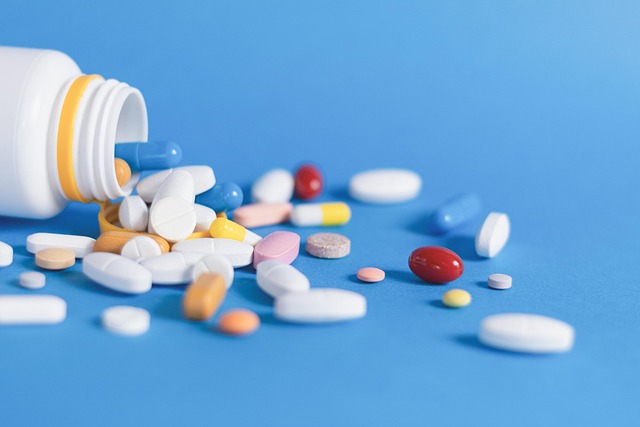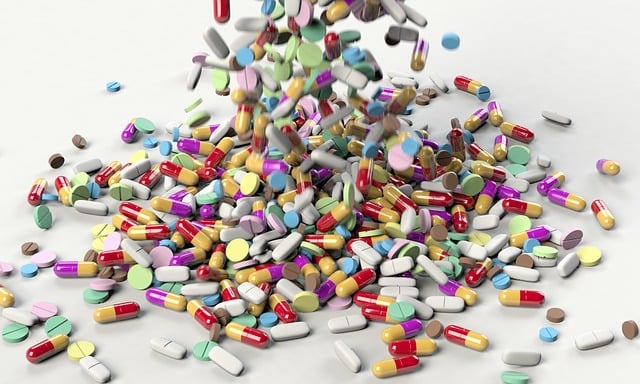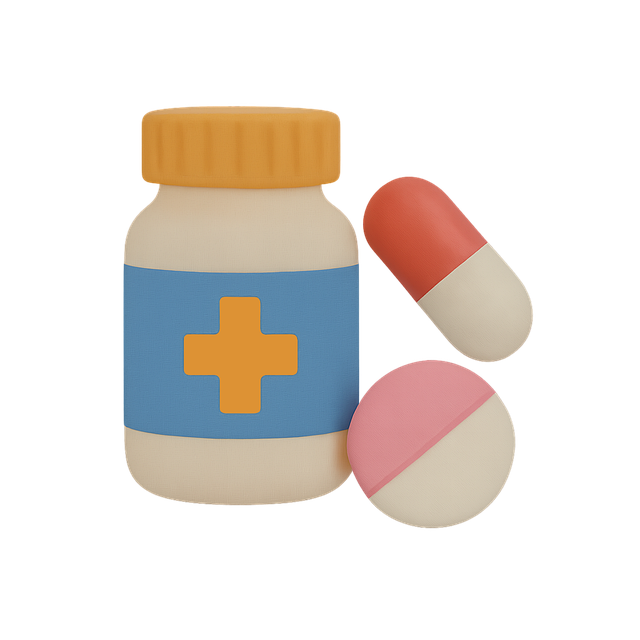GLP-1 drugs are a powerful, multi-faceted tool for managing type 2 diabetes, mimicking the natural hormone GLP-1. They stimulate insulin secretion, reduce glucagon release, slow gastric emptying, and aid in significant weight loss. These drugs offer improved glycemic control with a reduced risk of hypoglycemia, making them more convenient than traditional treatments. With their unique mechanism of action, GLP-1 drugs provide both short-term blood sugar management and potential long-term health benefits, including improved cardiovascular health and obesity reduction, while maintaining a safe profile with minimal side effects.
GLP-1 receptor agonists have emerged as powerful tools in diabetes management, offering a multi-faceted approach to improving patient outcomes. This article delves into the benefits of these innovative drugs, exploring their role in lowering blood sugar levels, managing weight, enhancing insulin secretion, and reducing hypoglycemia risks. By understanding how GLP-1 drugs work, healthcare providers can leverage their potential to achieve better glycemic control and improve overall metabolic health in patients with diabetes.
Understanding GLP-1 Receptor Agonists: Their Role in Diabetes Management

GLP-1 receptor agonists, or GLP-1 drugs, are a class of medications that mimic the effects of the natural hormone glucagon-like peptide-1 (GLP-1). They play a significant role in diabetes management by promoting insulin secretion and reducing glucagon release, leading to improved blood sugar control. These drugs have gained prominence due to their ability to offer multiple benefits, including weight loss, reduced risk of hypoglycemia, and decreased need for insulin injections.
In individuals with type 2 diabetes, GLP-1 drugs can help enhance insulin sensitivity and delay gastric emptying, resulting in better blood sugar regulation. This class of medications has proven effective in reducing HbA1c levels (a measure of long-term blood sugar control) and offering a more convenient treatment option compared to traditional insulin or other anti-diabetic drugs. With their unique mechanism of action, GLP-1 drugs have emerged as a valuable addition to diabetes management strategies, providing both short-term control and potential long-term benefits.
How GLP-1 Drugs Lower Blood Sugar Levels

GLP-1 drugs lower blood sugar levels by mimicking the effects of the natural hormone glucagon-like peptide-1 (GLP-1). This hormone is secreted in response to food, particularly carbohydrates and proteins, and plays a key role in regulating blood sugar. GLP-1 drugs stimulate insulin production in a glucose-dependent manner, meaning they release insulin only when blood sugar levels are high, thereby preventing excessive insulin secretion that can lead to hypoglycemia.
Additionally, these drugs slow down the emptying of the stomach, leading to improved feelings of fullness and reduced food intake. This effect is beneficial for weight management, as it can help individuals with diabetes achieve a healthier body weight, further improving their overall blood sugar control. By combining these mechanisms, GLP-1 drugs offer a dual approach to managing diabetes, enhancing both glycemic control and promoting healthy lifestyle changes.
Beyond Blood Sugar Control: Metabolic Benefits of GLP-1 Receptor Agonists

GLP-1 receptor agonists, a class of drugs that mimic the effects of the gut hormone GLP-1, offer significant advantages in diabetes management beyond simply controlling blood sugar levels. These medications have been shown to provide substantial metabolic benefits, making them valuable tools in the fight against diabetes and its complications.
One notable benefit is their ability to reduce body weight. By increasing feelings of fullness and slowing gastric emptying, GLP-1 drugs help individuals eat less and maintain a healthier weight. This effect is particularly important as obesity is a major risk factor for type 2 diabetes and can lead to various metabolic disorders. Additionally, these agonists improve lipid profiles by lowering LDL (bad) cholesterol and triglyceride levels while increasing HDL (good) cholesterol, contributing to overall cardiovascular health. These GLP-1 drugs also exhibit anti-inflammatory properties, which may help in the prevention of diabetic complications, such as neuropathy and nephropathy.
Improved Weight Management with GLP-1 Drugs: A Promising Approach

GLP-1 drugs have emerged as a promising approach for improved weight management in diabetes treatment. These agonists mimic the effects of the natural hormone glucagon-like peptide-1, which stimulates insulin release and suppresses glucagon secretion, leading to reduced blood sugar levels. Beyond their primary role in glycemic control, GLP-1 drugs also act on areas of the brain that regulate appetite and satiety, resulting in increased feelings of fullness and reduced hunger.
This dual action not only aids in managing blood sugar but also plays a significant role in weight loss efforts. Clinical studies have shown that individuals taking GLP-1 receptor agonists often experience substantial and sustained weight reductions compared to placebo or other standard treatments. By addressing the rising concern of obesity, which is closely linked to type 2 diabetes, these drugs offer a promising strategy for comprehensive diabetes management and improved overall health outcomes.
Enhancing Insulin Secretion and Reducing Hypoglycemia Risks

GLP-1 receptor agonists are a class of medications that mimic the effects of the natural hormone GLP-1 (glucagon-like peptide-1). One of their key roles in diabetes management is by enhancing insulin secretion from the pancreas. When blood sugar levels rise, these drugs stimulate beta cells to produce more insulin, thereby facilitating glucose uptake by cells and lowering blood sugar. This effect is particularly beneficial for type 2 diabetics who may have a reduced ability to secrete insulin effectively.
Beyond insulin secretion, GLP-1 drugs also play a crucial role in reducing the risk of hypoglycemia (low blood sugar). Unlike some traditional diabetes medications that can cause sudden drops in blood glucose levels, GLP-1 agonists work more gradually and help stabilize blood sugar by balancing insulin release with glucagon. This reduces the chances of nocturnal hypoglycemia, providing diabetics with a safer and more predictable blood sugar control.
Safety and Tolerance: Considerations for GLP-1 Receptor Agony Use in Diabetes Treatment

GLP-1 receptor agonists, a class of drugs designed to mimic the effects of the natural hormone GLP-1, have shown remarkable safety and tolerance profiles in diabetes management. These medications are generally well-tolerated by patients, with mild and manageable side effects such as nausea, vomiting, or diarrhea, which often subside over time. Unlike some other diabetes treatments, GLP-1 drugs have a low risk of hypoglycemia (low blood sugar levels) and do not cause weight gain, making them a safer and more patient-friendly option for many individuals living with type 2 diabetes.
The safety of GLP-1 receptor agonists is further supported by extensive clinical trials and long-term studies, which have demonstrated their effectiveness in reducing HbA1c (blood sugar levels) without significant adverse events. Moreover, these drugs have been approved by major health regulatory bodies worldwide, solidifying their place as a reliable and safe component of diabetes treatment plans. This safety profile allows healthcare professionals to prescribe GLP-1 drugs with confidence, offering patients an additional tool in managing their diabetes while minimizing potential risks.
